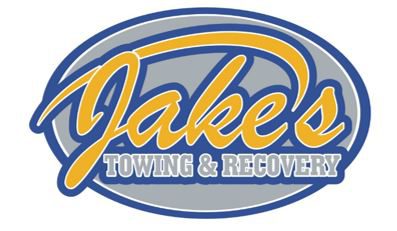-
Office Operating Hours Mon - Friday 8:00 AM - 5:00 PM
-
Call Us 916-726-5447
-
Email Us Info@Jakestow.com
Heavy Towing: Safety Tips You Should Know

Table of Contents
- Introduction: Why Safety Matters in Heavy Towing
- Pre-Tow Inspection: The Key to a Smooth Job
- Load Securement: Keeping Everything in Place
- Driving Techniques for Heavy Loads
- Weather and Road Conditions: Handling the Unexpected
- Emergency Protocols: Being Ready for Anything
- Conclusion: Trust Jake’s Towing and Recovery
Introduction: Why Safety Matters in Heavy Towing
Heavy towing is not like moving a small car off the road. It involves skill, planning, and top-level safety practices. One wrong move can mean damage, injury, or worse. That’s why proper techniques and precautions are so important. If you need a Heavy Duty Towing service, knowing what goes into the process can help you stay ahead of any risks.
From massive trucks to construction equipment, heavy loads demand a steady hand and the right gear. Let’s break down the safety measures that make all the difference in a successful tow.
Pre-Tow Inspection: The Key to a Smooth Job
Before anything moves, a detailed check must happen. This step can prevent disasters on the road. Here’s a checklist to follow:
| Inspection Point | Why It’s Important |
| Tires and Brakes | Prevents skidding and blowouts |
| Lights and Signals | Ensures visibility and safety |
| Tow Hitch and Chains | Keeps load secure |
| Load Weight Distribution | Avoids tipping and imbalance |
| Hydraulics and Suspension | Handles road shocks properly |
Ignoring any of these could mean a major problem mid-transport.
Load Securement: Keeping Everything in Place
Loads that shift can cause serious trouble. Proper securement is a must. Use the right straps, chains, and binders based on the load’s weight and size. Always follow these golden rules:
- Even Weight Distribution – Keeps balance in check and prevents trailer sway.
- Multiple Tie-Down Points – One strap isn’t enough. Secure at multiple points.
- Regular Checks – Even after starting, pull over and recheck everything.
These steps help prevent rollovers, jackknifes, and falling cargo.
Driving Techniques for Heavy Loads
Towing a heavy load means adjusting how you drive. These techniques can save lives:
- Slow and Steady Wins – Avoid sudden stops and sharp turns.
- Increase Following Distance – A loaded truck needs more time to brake.
- Watch for Bridge and Road Weight Limits – A mistake here can be costly.
- Use Turn Signals Early – Alert other drivers well in advance.
A heavy-duty tow isn’t just about moving a load. It’s about moving it safely.
Weather and Road Conditions: Handling the Unexpected
Bad weather can turn a simple job into a nightmare. Rain, ice, and strong winds all affect control. Here’s how to stay safe:
- Rain – Wet roads reduce traction. Slow down and give extra space.
- Ice and Snow – Tire chains and reduced speeds are non-negotiable.
- Wind – Strong gusts can push trailers off course. Keep a firm grip and adjust speed accordingly.
Road conditions matter just as much. Uneven surfaces, steep hills, and sharp turns require extra caution. A heavy load reacts differently than a regular vehicle.
Emergency Protocols: Being Ready for Anything
Even with all precautions, problems can still happen. Every tow operator should have an emergency plan. Some key steps include:
- Breakdown Procedures – Know where to pull over safely.
- Fire Safety – Have extinguishers ready for electrical or fuel fires.
- Load Shift Response – If a load moves, stop immediately and secure it again.
- Communication – Keep dispatch updated at all times.
A prepared driver is a safe driver.
Conclusion: Trust Jake’s Towing and Recovery
At Jake’s Towing and Recovery, we don’t take shortcuts. Our Heavy Duty Towing Service in CA is built on skill, safety, and reliability. When you need a tow, trust us to handle it right. Call us now for expert service that gets the job done without risk.
People Also Ask
- How do I know if my vehicle needs heavy-duty towing instead of regular towing?
If your vehicle is over 10,000 lbs, or if it’s a commercial truck, RV, or equipment, you likely need heavy-duty towing. Regular tow trucks won’t cut it. - What’s the most common mistake made during heavy towing?
Overloading a tow truck or trailer. Exceeding weight limits causes braking failures and accidents. Always check load capacity before moving. - How can I reduce costs on heavy-duty towing?
Prevent breakdowns by keeping up with maintenance. A well-maintained vehicle won’t need emergency towing as often. - What happens if a load shifts while towing?
Stop immediately. Secure the load again before continuing. A shifting load can cause loss of control, damage, or an accident. - Why do some towing companies refuse to tow certain vehicles?
Not all tow companies have the right equipment. Heavy-duty towing requires specialized gear, training, and experience. If a company isn’t prepared, they won’t take the risk.
Heavy-duty towing is more than just hooking up a truck and driving away. It’s about safety, skill, and planning. Knowing the right steps can prevent disasters and keep the road safe for everyone. Need professional help? Give us a call today!
